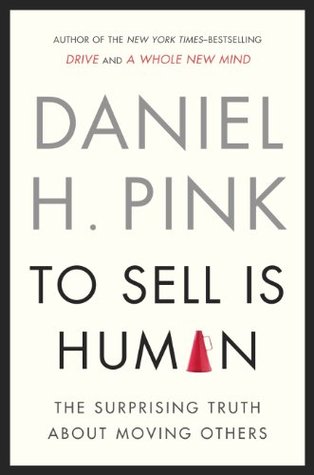More on this book
Community
Kindle Notes & Highlights
Read between
January 12 - February 3, 2020
Wait.
Wane. After you’ve mimicked a little, try to be less conscious of what you’re doing.
includes one more chair that remains empty. It’s there to remind those assembled who’s really the most important person in the room: the customer.
Try this in your own world. If you’re crafting a presentation, the empty chair can represent the audience and its interests.
If you’re preparing a lesson plan, an empty chair can remind you to see things from your students’ perspective.
http://www .danpink.com/assessment—where
ask more questions.
Most of all, talk less and listen more.
Practice your “ask”
smile and sit up straight.
Each pair selects an item. One person plays the role of someone from the early 1700s. The other has to explain the item.
“You are forced to care about the worldview of the other person.” That’s something we all should be doing a lot more of in the present.
note the mood at the beginning of the session.
what’s the temperature?
at what you think is the midpoint of the meeting, che...
This highlight has been truncated due to consecutive passage length restrictions.
do the same at the very end. Think of this as an emotional weather map to help you figure out whether conditions are...
This highlight has been truncated due to consecutive passage length restrictions.
we’re more likely to be persuaded by those whom we like.
one reason we like people is that they remind us of . . . us.
Finding similarities can help you attune yourself to others and help them at...
This highlight has been truncated due to consecutive passage length restrictions.
What do we have in common, either with another person or with everyone?
“Just getting myself out of the house and facing people” is the stiffest challenge, he says. “It’s that big, unknown faceless person I have to face for the first time.”
“autosuggestion,”
saturates his own mind with belief in the commodity or service offered for sale, as well as in his own ability to sell.”
Tell yourself you can do it.
Declaring an unshakable belief in your inherent awesomeness inflates a sturdy raft that can keep you bobbing in an ocean of rejection.
the person whose example you should be following takes a different tack. His name is Bob the Builder.
he asks a question: Can we fix it?
the most effective self-talk of all doesn’t merely shift emotions. It shifts linguistic categories. It moves from making statements to asking questions.
the efficacy of “interrogative self-talk”
On average, the self-questioning group solved nearly 50 percent more puzzles than the self-affirming group.3
Those who approached a task with Bob-the-Builder-style questioning self-talk outperformed those who employed the more conventional juice-myself-up declarative self-talk.
if you instead ask, “Can I make a great pitch?” the research has found that you provide yourself something that reaches deeper and lasts longer. You might respond to yourself, “Well, yes, I can make a great pitch.
You might remind yourself of your preparation.
You might also give yourself specific tactical advice.
Mere affirmation feels good and that helps. But it doesn’t prompt you to summon the resources and strategies to actually accomplish the task.
Interrogative self-talk, the researchers say, “may inspire thoughts about autonomous or intrinsically motivated reasons to pursue a goal.”
To help get us out of the door, then, the first component in buoyancy is interrogative self-talk.
attunement.
positivity.
Once positive emotions outnumbered negative emotions by 3 to 1—that is, for every three instances of feeling gratitude, interest, or contentment, they experienced only one instance of anger, guilt, or embarrassment—people generally flourished.
learned helplessness was usually a function of people’s “explanatory style”—their habit of explaining negative events to themselves.
People who give up easily, who become helpless even in situations where they actually can do something, explain bad events as permanent, pervasive, and personal.
They believe that negative conditions will endure a long time, that the causes are universal rather than specific to the circumstances, and that they’re the ones to blame.
“Agents who scored in the optimistic half of explanatory style sold 37% more insurance than agents scoring in the pessimistic half. Agents in the top decile sold 88% more insurance than those in the bottom decile,” they discovered.
In other words, the salespeople with an optimistic explanatory style—who saw rejections as temporary rather than permanent, specific rather than universal, and external rather than personal—sold more insurance and survived in their jobs much longer.
Ask yourself: “Can I move these people?”
interrogative self-talk is often more valuable than the declarative kind.
don’t simply leave the question hanging in the air like a lost balloon. Answer it—directly and in writing. List five specific reasons w...
This highlight has been truncated due to consecutive passage length restrictions.
visit Barbara Fredrickson’s website (http://positivityratio.com/). Take her “Positivity Self Test”—a twenty-question assessment you can complete in two or three minutes that will yield your current positivity ratio.
Positivity: Top-Notch Research Reveals the 3 to 1 Ratio That Will Change Your Life,


